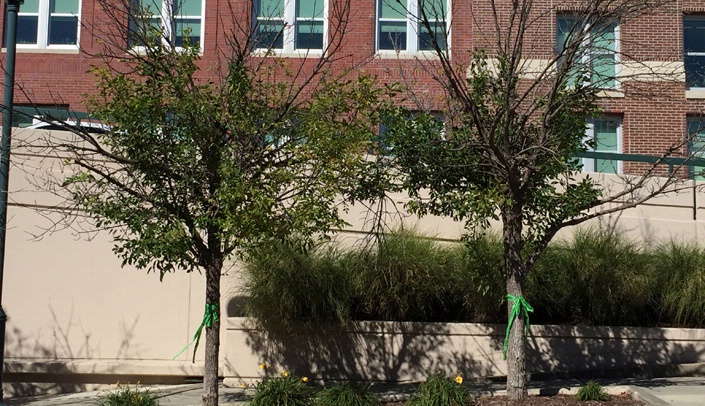This past weekend the ash trees in front of The Lied Transplant Center were removed. While I hate seeing trees cut down, in this case it is actually good tree management.
The Emerald Ash Borer (EAB), which is an invasive species, was discovered in Omaha earlier this year, and we are now in a treatment zone.
It was only a matter of time before this happened, and the grounds crew on campus was prepared. They already had identified the location of all ash trees on campus including UNMC, Nebraska Medicine and the Ronald McDonald House. Those trees, like all other trees on campus, are regularly monitored for health and condition.
When EAB arrived, these trees were rigorously re-assessed, since damaged trees are a magnet for EAB, and the farther away the borer can be kept from healthy trees the better. It was determined that 26 ash trees on campus needed to be removed.
A total of 79 ash trees are being saved and all of them have been treated. Treatment occurs underneath the bark of the trees and helps to protect them from the EAB larvae which are responsible for the damage that ultimately kills the trees.
Not only is it good tree management to remove diseased or damaged trees, removing some of these trees will help other trees to reach their full, healthy potential. Many of these trees were planted before there was a comprehensive landscape architecture plan, and this resulted in trees being planted too close together and trees being planted in areas that were not suitable for their eventual size.
This was the case for the trees that were in front of The Lied Transplant Center. Because that area doesn’t support trees, ornamental grasses will be planted there instead. Other locations still are being evaluated for understory planting, species diversity and appropriate spacing.
Do you have ash trees on your property? For tree identification help, EAB treatment options, and guidelines on finding a suitable contractor, visit the extension office site.
